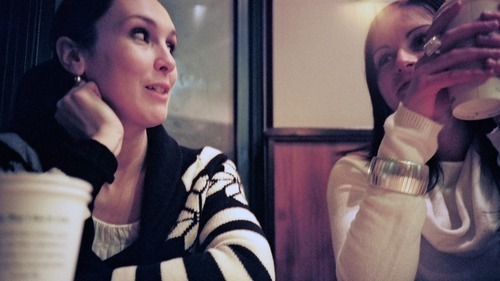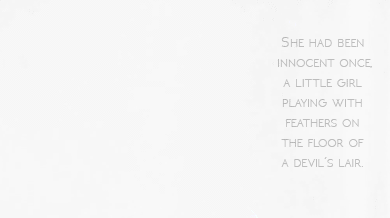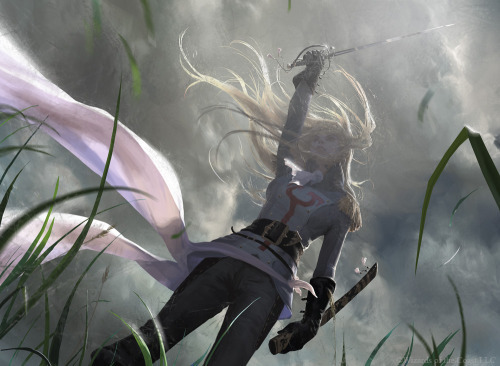Katherine Frances's Blog, page 388
March 10, 2015
fantasy-art-engine:Shadim the Cleansing Fire by Cobaltplasma
Advice: Avoiding Action Lists
Anonymous asked:
Hey, thank you so much for this blog! I really appreciate it! My problem when I’m writing is, that I tend to “list” things my characters do, so it seems kind of mechanical. Do you have advice on how to deal with that without making it too touchy-feely?When you imagine a scene, you don’t have to relay what the character is doing movement by moment. Think about what’s important for the reader to be able to visualize what you’re imagining. If your character takes a drink, I don’t need to know that she put her hands around the cup, raised the glass to her lips, tilted her head back, let the drink pour into her mouth, swallowed, put the cup down, and let it go. That’s just a laundry list of unnecessary actions. It’s sufficient to just say, “Clara lifted the glass to her lips and took a sip.” Everything else is implied.
The same is true when it comes to a string of actions, like waking up, getting dressed, eating breakfast, and walking to the bus stop. You could just say, “Clara woke up early and was dressed and out the door as soon as she finished breakfast. The bus was late as usual, but she made it to math class just before the bell rang.” This is much more interesting than, “Clara woke up. Then she got out of bed. Then she took a shower. After that she got dressed. Then she went downstairs to eat breakfast. She had toast…” which is monotonous and choppy, and tells us much more than we need to know. ;)
March 9, 2015
Interesting Chit Chat

Small talk isboring. Characters who waffle on about the weather and the dream they had last
night and their favourite toy when they were a kid don’t hold a reader’s
attention for very long.
At the same
time, characters who enter a scene, get what they want, and leave can make the
story feel rushed and sterile.
There are, of course,
plenty of books that use the more rushed approach and it can work very well. It
makes it much easier to keep the reader hooked and turning pages. Many
bestsellers use this approach, although they don’t win many literary awards.
But we’ve all
read books that had long passages of seemingly random observations and
conversations that not only didn’t read as boring, but actually added to the
story. You felt a stronger connection to the character because of the glimpse
into their personality. So how did they manage it when your attempts feel like
meandering asides and unnecessary tangents?
March 8, 2015
"Sometimes, I’m the mess.
Sometimes, I’m the broom.
On the hardest days,
I have to be both."
Sometimes, I’m the broom.
On the hardest days,
I have to be both.”
- Rudy Francisco (via hereislight)
ankhsith:Encounter by KR0NPR1NZ
womenofmagic:Thalia, Guardian of Thraben by Jana Schirmer &...
she wasn’t innocent now, but she didn’t know what to do about...

she wasn’t innocent now, but she didn’t know what to do about it. this was her life: magic and shame and secrets and teeth and a deep, nagging hollow at the center of herself where something was most certainly missing.
"The woods are lovely, dark, and deep,
But I have promises to keep,
And miles to go before I..."
But I have promises to keep,
And miles to go before I sleep,
And miles to go before I sleep.”
-
Robert Frost, from ‘Stopping by Woods on a Snowy Evening’ (via seabois)
Fun fact:
This is one of the most analyzed pieces of poetry in the world… And everyone has their own idea about the symbolism of the woods and the speaker’s obligations, but finally they sat Robert Frost down at an interview and asked him, “What is the poem Really about? Is it about death? Is it about the depth of the human soul? Is it about dreams? Is it in reference to some great literary epic?”
And Robert Frost goes, “No. I was just walking home through the woods one night, and I thought the woods looked really lovely, but I had things to do at home, so I had to keep going home.”
And you can just hear the eye twitching of the guy interviewing him as he has his pen raised in midair, ready to capture the true depths of the poet and finally reveal to the whole world the true meaning of—-
Nope. Robert Frost is like, “I told you in the poem what the poem is about, so I don’t get why you don’t understand it.”
And that’s the magical and horrifying thing about analyzing literature… You can find your own meaning in poetry that the poet never consciously intended to put there.
*source: my grandma was an English teacher and tells me quirky stories about poets sometimes*
(via glittertomb)
What do you think about the portrayal of girls in YA fiction? Good, bad or just right?
"YA fiction" is a blanket term for an enormous wealth of writing, and it’s impossible to generalise, just as it’s impossible to generalise about adult or children’s fiction. If I really had to make an overall judgement, though: I believe that we’re moving towards more complex and interesting female characters who have lives and goals outside the pursuit of a love interest, which is fantastic. There are so many brilliant female characters in YA – possibly more so, in fact, than in adult fiction. Most of the big YA franchises are about, and written by, women. It’s amazing, and one of the reasons I love YA so much.
Having said that, I can’t shake the feeling that female characters are judged in a slightly different manner to their male counterparts, because they are now expected to be STRONG FEMALE CHARACTERS™, rather than characters who happen to be female. What I call the Katniss/Bella dichotomy has emerged, where a girl is either labelled as a Katniss (SHE’S SO KICKASS AND DEFIES GENDER STEREOTYPES) or a Bella (SHE’S SO WEAK AND MARRIES SOMEONE UGH). This has – harmfully, in my opinion – caused many of the former sort of female character to be persistently compared to Katniss, presumably to tempt readers with the prospect of another Strong, Independent Female Lead Who Kicks Loads of Ass All the Time™.
I’ve spoken about this before, but I want to reiterate it: I adore Katniss Everdeen. She is an emotionally complex, fascinating character, and it’s right that she and Suzanne Collins should be praised for that. But to reduce her to a 2D blueprint for Strong Female Characters™ is to do her a disservice. She is more than a blueprint. If you’ve read Mockingjay in particular, you’ll know that Katniss has moments of great vulnerability, passivity, and weakness, as we all do. She is used as a puppet by District 13. She hurts. She panics. She falls in love with the safety and kindness offered by Peeta. She cares about her little sister and her mother. Yes, she’s brilliant with a bow, intelligent and resourceful, but she is not an emotionless cardboard cut-out that coolly steamrolls her enemies by Kicking Loads of Ass All the Time. She is unique. She is complicated. That’s what makes her human.
It’s also doing a disservice to many other female characters in YA to compare them solely to Katniss. As I’ve said, Katniss Everdeen is unique. So is Tris Prior. So is Hermione Granger. So are Karou and Celaena Sardothien and Clary Fray and yes, so is Paige Mahoney. We need to celebrate what makes these women different from one another; to treat them as unique human beings, rather than replicas of Katniss. Katniss should not be the touchstone for the worth of a female character. Focusing purely on the similarities inevitably leads to bandwagon thinking (i.e. “Oh, not another Strong Female Character™, these damned female authors are ripping off The Hunger Games again!”). Do you see all male characters regularly compared to Sherlock Holmes, or Harry Potter, or Percy Jackson? No, you don’t, because it would sound ridiculous. Male characters are examined as individuals, and we need to do that with our ladies, too. It’s time for female characters to be defined by what they are – not by the female characters around them, or that came before them.
There also has to be room for characters who are feminine: who wear dresses, who love makeup and doing their hair, who are masterful cooks, who adore the colour pink and would really like a boyfriend or a baby. Those characters musn’t be snootily dismissed as “Bellas” or “anti-Katnisses”. There should be room for the portrayal of all sorts of girls. YA is a wonderful place, with some of the most daring and inventive books in the industry, and everyone should feel welcome to join in.
TL;DR: The portrayal of girls overall in YA is varied and thus fabulous, but the response to them is often puzzling.







